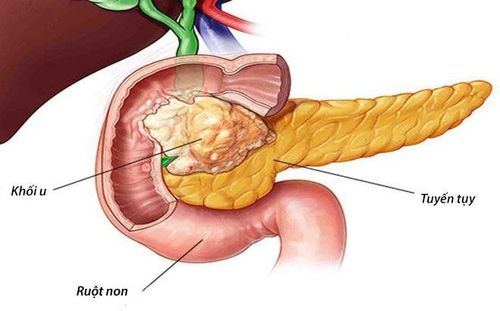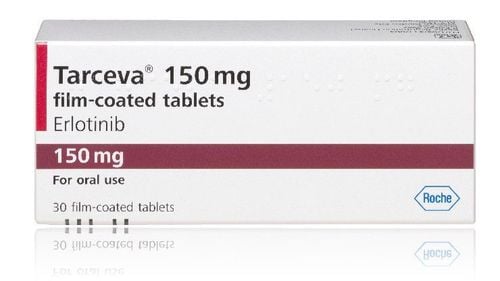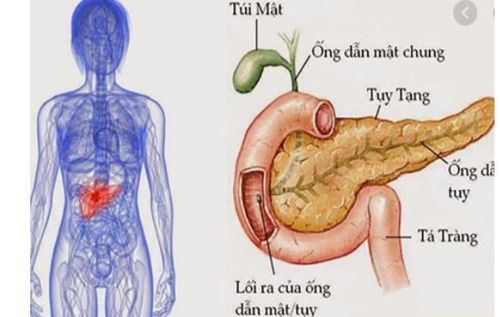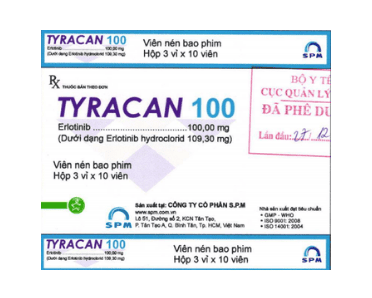This is an automatically translated article.
The article was professionally consulted by Specialist Doctor I Dong Xuan Ha - Gastroenterologist - Department of Medical Examination and Internal Medicine - Vinmec Ha Long International General Hospital. With 14 years of experience in the field of Endoscopy - Gastroenterology, Doctor Dong Xuan Ha has proficiently performed diagnostic gastrointestinal endoscopy techniques, emergency interventions and therapeutic interventions.Pancreatic head tumors in particular and pancreatic tumors in general are divided into two types: malignant tumors and benign tumors. Benign pancreatic head tumors are rare, slow-growing, non-metastatic, and pose many of the same dangers as cancerous malignancies.
1. Are there pancreatic head tumors and benign pancreatic tumors?
Pancreatic head tumor is a type of pancreatic tumor - a common noun for pathologies of the "tumor" form in the pancreas. Various pancreatic tumors: Can be cystic, benign, solid, malignant, congenital or acquired.In addition to the head of the pancreas, tumors can be found in the body or tail of the pancreas. Each tumor type as well as its location often has a different pathogenesis, symptoms and treatment modality.
In fact, pancreatic tumor is often understood as pancreatic cancer, because the common clinical tumor of exocrine pancreas is cancer of the pancreas secreting digestive enzymes. However, the pancreas consists of two parts: the exocrine pancreas and the endocrine pancreas. Tumors of the endocrine pancreas are uncommon and rarely mentioned by experts, so they are often ignored until the disease has progressed to a late stage.
Trắc nghiệm: Bạn biết gì về các yếu tố nguy cơ, chẩn đoán và điều trị ung thư tuyến tụy?
Ung thư tuyến tụy phổ biến thứ 10 trong những bệnh ung thư mới và là nguyên nhân thứ 4 gây tử vong do ung thư ở nam, nữ. Bài trắc nghiệm này sẽ kiểm tra kiến thức của bạn về các yếu tố nguy cơ, chẩn đoán và cách điều trị ung thư tuyến tụy.
Bài viết tham khảo nguồn: medicalnewstoday 2019
2. Signs to recognize benign and cancerous pancreatic tumors
We know that the pancreas is a hammer-shaped organ with 3 parts: head, body and tail. Pancreas weight about 80g, average size 15cm long, 6cm high, 3cm thick.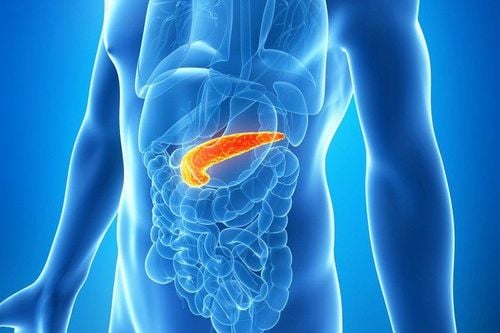
Tumors arising from the islets of Langerhans are called pancreatic neuroendocrine tumors or pancreatic endocrine tumors, and if they are malignant, they are called islet cell carcinoma or pancreatic carcinoid. Pancreatic neuroendocrine tumors may or may not be symptomatic.
People are divided into two groups: functional tumor group and non-functional tumor group. Functional tumor: Secretion of one or more hormones with a function should cause clinical symptoms (such as: gastrin, insulin, glucagon, somatostatin,...).
This type is usually a benign (non-cancerous) tumor. Non-functioning tumor: Also secretes certain substances but has no effect on organs, symptoms only when the tumor grows and metastasizes. This type is usually a malignant (cancerous) tumor.
For the diagnosis of endocrine pancreatic tumor, in addition to clinical symptoms, it must also be confirmed by quantitative hormone blood tests and imaging techniques: Ultrasound, computed tomography (CT) Scanner), magnetic resonance (MRI), PET-CT, scintigraphy,...
3. Some types of pancreatic head tumors are benign

Congenital pancreatic tumors Congenital pancreatic tumors - ectopic pancreas are tumors that have a pancreas-like structure as a result of developmental disorders of the pancreatic germ. Tumors located in different locations in the abdomen, usually in the submucosa (75%) of the gastrointestinal tract have no anatomical relationship to the main pancreas.
This type of congenital pancreatic tumor is generally rare and harmless. If there are clinical symptoms, it may require surgical intervention, remove the tumor if it is considered as a polyp with suspicion of malignancy.
Pancreatic ring In fact, pancreatic ring is not a pancreatic tumor, however, clinically, X-ray, ultrasound and on the operating table in the abnormality of the pancreatic head create a ring (like a ring) hugging the segment. II duodenum, looks like a tumor. Pancreatic ring can be a closed or non-closed round ring, embracing the duodenum causing narrowing, causing intestinal obstruction syndrome or accompanied by biliary obstruction.
With pancreatic ring, the surgical method is the only method to save the patient's life, requiring surgery to create new circulation for the duodenum. Pancreatic fistula, pancreatitis and pancreatic pseudocyst after transverse surgery may result in pancreatic fissures, so the method is usually chosen by bypassing the pancreatic ring or the lateral duodenum or duodenum.
Pancreatic cyst Congenital pancreatic cyst is uncommon, caused by enlargement of the pancreatic papillae (acino-tubular) or pancreatic ducts.
Although not too dangerous, pancreatic head tumors should still be treated to avoid possible complications. Currently, Vinmec International Hospital has applied the biliary tract surgery method to treat pancreatic head tumors with a success rate of over 98%. The method is performed safely with the most modern laparoscopic surgery equipment and experienced doctors.
Please dial HOTLINE for more information or register for an appointment HERE. Download MyVinmec app to make appointments faster and to manage your bookings easily.





